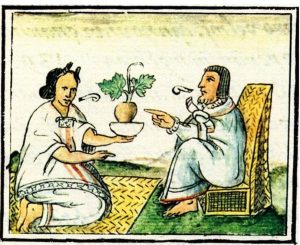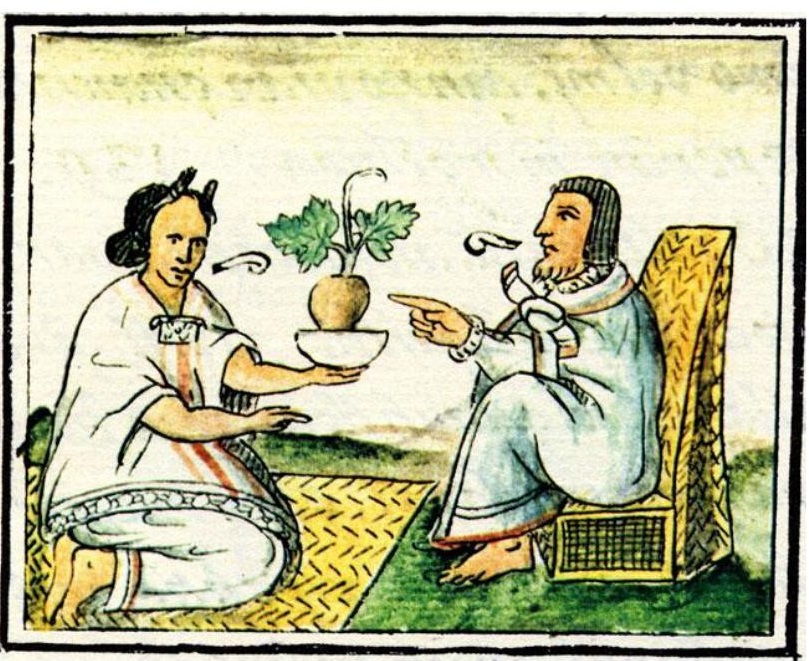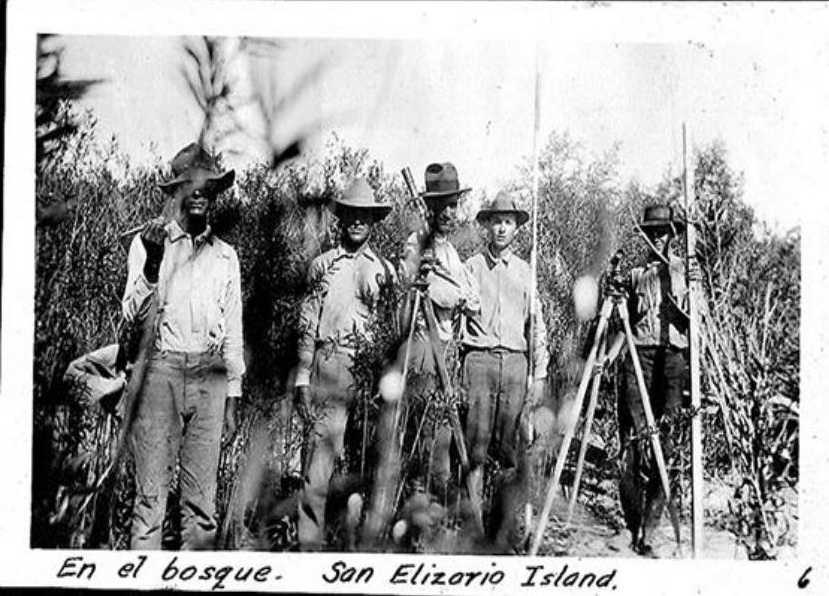By Kirby Vickery from the June 2015 Edition

Over the past year I have had a lot of fun telling Aztec mythology stories. I have come to believe that their society was a lot closer to their mythology than other ancient peoples. For western man most all mythology belief has melded, into religion in one form or another, or into nursery rhyme, or children’s stories. If you were to think about it you might agree.
The Aztec’s on the other hand held a religious ceremony for every aspect of life thus making the population dependant on their own priestly society for daily guidance. There was none of, “I’ll go to church if it rains otherwise Fred and I have an 8:30 tee time.” Their life was one of belief and practice. Their religion reached into all aspects of their individual lives, even medicine. There was actually a list of volunteers to be sacrificed at the altar because being a sacrifice to the gods was a very honorable way to die. One of the other biggest reasons their mythology didn’t go or drift into anything else is that it didn’t have time. Their reign was only about a hundred years or so when the Spanish showed up. Although they did carry many beliefs from their predecessors all the way back to the 12th and 13th century.
One thing that was noted by the Spaniards was the average the Aztec lived as compared to their own life spans. Although it seems a little trite, their knowledge of medicine and the human physiology was constantly being fed fresh bodies with only their hearts cut out. A priest that could heal his parishioners would be a very popular priest and would have a natural following. The Aztec average age was thirty years above that of their conquerors.
Although part of the longer lifespan the average Aztec had was use to their very standard of personal and social hygiene and to their diet which consisted of fresh fruits, grains and vegetables. A lot of their medicine was herbal and spiritual.
Within the Aztec medical dictionary they had specialists. Off the top with all the cadavers coming from alters one of these specialties was the setting of bones and infection fighters. They knew how to apply astringents and could sew up flesh wounds using a large headed ant as a stitch. Pull the skin together. Grab one of these large ants. Push its head into place and its jaws would hook into both sides of the flesh. Pop off the head and you have a suture. They even treated cataracts, hair loss, and digestive problems.
According to the Florentine Codex (1575 – 77) bladder conditions “Must be injected with the powder ground from the root of the ‘cacamotic ’ plant. From what I read it didn’t say where this ‘injection was supposed to be. But the drawing left no doubt and reminded me of a prostrate exam from your local, smiling, proctologist. Other writing tell that this cure felt like chili powder being rammed up in there. Other sites say that a whole bunch wasn’t needed and the victim or patient was always grateful. Another potion for this problem was made from the tail of the ‘tlacuatzin.’ Fracture wounds were wrapped in a powder ground from what looks like a prickly pear cactus after cleaning. Then everything was placed in a cast consisting of the resin from some plants or just some splints.
Some of what they prescribed isn’t that pretty. For example, if you took a real heavy blow to the chest and were suffering chest pains as a result. Your doctor would have you drink still warm urine, mixed with the ground bodies of three or four lizards. If you modern people think that’s bad just try to think how those lizards felt.
A stiff neck from a hard day at the office was treated by bathing and pressure applied to the neck area then a poultice of plants would be applied and a water drink mixed with the ‘coaxtuitl’ plant. I have seen this plant several times for different fixes and I believe it is a nerve relaxer or pain reliever. They also used an extract from the tobacco plant as a numbing agent.
The Aztec and Inca were the givers of many good things to the old world. These included foods such as corn and the potato, coffee, pepper and a lot more. They also gave the old world some things which the people of Europe would rather have skipped. One of the most heinous of these is syphilis. One theory has Columbus’ crew bring it back from the new world. It was treated by the Aztecs. The patient was given a drink of water mixed with the herb ‘tietlemaitl’ and powdered ‘tialaquequetzal.’ Then the patent was placed in a ‘temazcal’ or steam bath. I am unable to find how well this treatment worked. If you take into consideration that ‘tialaquequetzal’ is actually copper filings, and we use penicillin based antibiotic drugs, I would think they weren’t all that successful for this one.
Speaking of antibiotics, it was discovered that the Agave plant has antibiotic properties in 1955. Tequila is made from the Agave plant. It was cultivated by the Nahuatl speaking people (Aztecs) and was used for food and medicine a thousand years before the Spaniards showed up.

Download the full edition or view it online
—
Kirby was born in a little burg just south of El Paso, Texas called Fabens. As he understand it, they we were passing through. His history reads like a road atlas. By the time he started school, he had lived in five places in two states. By the time he started high school, that list went to five states, four countries on three continents. Then he joined the Air Force after high school and one year of college and spent 23 years stationed in eleven or twelve places and traveled all over the place doing administrative, security, and electronic things. His final stay was being in charge of Air Force Recruiting in San Diego, Imperial, and Yuma counties. Upon retirement he went back to New England as a Quality Assurance Manager in electronics manufacturing before he was moved to Production Manager for the company’s Mexico operations. He moved to the Phoenix area and finally got his education and ended up teaching. He parted with the university and moved to Whidbey Island, Washington where he was introduced to Manzanillo, Mexico. It was there that he started to publish his monthly article for the Manzanillo Sun. He currently reside in Coupeville, WA, Edmonton, AB, and Manzanillo, Colima, Mexico, depending on whose having what medical problems and the time of year. His time is spent dieting, writing his second book, various articles and short stories, and sightseeing Canada, although that seems to be limited in the winter up there.





You must be logged in to post a comment.